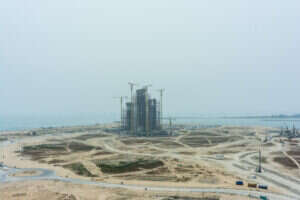At the risk of stating the obvious, cities are not like the countryside. Everything’s covered in concrete. The only trees are carefully marshaled so they only take up a small bit of the pavement. And there’s rubbish absolutely everywhere.
This is why it should’t surprise us that city life is affecting biodiversity in new and unexpected ways. You may have noticed that scavenger species like foxes and pigeons do rather well in cities, while other animals stay well away. But the effects don’t stop here: scientists have been discovering brand new species of insects and bacteria in urban areas, hinting at an entirely new type of ecosystem flourishing on streets and even on subways.
Early next month, a team of researchers from the Los Angeles County Natural History Museum will release a paper documenting 30 brand new species of fly, all found in the city over a three-year period. The flies are all from the same genus, but vary slightly in the size and shape of their genitalia (stop sniggering at the back, there).
Discovering 30 new types of anything in the course of a single piece of research is pretty notable. But lead scientist Emily Hartop commented in a release about the project that the discovery shows something wider about how quickly biodiversity is changing in cities.
… even in the very areas where we live and work, our biodiversity is critically understudied. It means that in your own backyard, or community park, live species that we do not even know exist. It means that all of those invisible ecosystem processes that occur all around us are being conducted, in part, by creatures we know nothing of.
The scientists go into more depth on the project in this video:
The LA flies paper will be released on April 6 and can be accessed via Zootaxa.
Earlier this year, scientists swabbed and sampled bacteria across the New York subway, and found thousands of different microbial organisms – but, startlingly, nearly half of the DNA sampled did not match “any known organism”. Again, the subway seems to have created a new type of environment for the bacteria, so they’re evolving in new and different ways.






